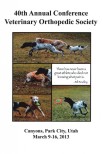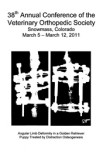OBJECTIVES: To (1) develop guidelines for the location of drill entry and exit points when inserting a transcondylar screw across the canine humerus; (2) compare the safe corridor for transcondylar screw insertion when drilling medial-to-lateral with drilling lateral-to-medial.
STUDY DESIGN: Anatomic study.
ANIMALS: Dogs (n = 43).
METHODS: The optimum position of a transcondylar screw in 84 elbows was determined using CT multiplanar reconstructions. The positions of drill entry and exit points were defined relative to the epicondyles. Differences in elbow size were accounted for by dividing the measurements by the humeral condylar diameter (HCD), to give normalized measurements. Mean values of normalized measurements were used to develop universal guidelines for the location of drill entry and exit points. These guidelines were then applied to the 84 elbow CT reconstructions. The size of the safe corridor around this calculated drill line was determined, and expressed as tolerance angles in the frontal and transverse planes. The size of the safe corridors for medial-to-lateral and lateral-to-medial drilling were compared.
RESULTS: The lateral entry/exit point was 0.3 × HCD cranial and 0.3 × HCD distal to the lateral epicondyle. The medial entry/exit point was 0.3 × HCD cranial and 0.2 × HCD distal to the medial epicondyle. Using these guidelines resulted in safe virtual screw placement in all 84 elbows. The tolerance angle in the frontal plane was significantly smaller when drilling medial-to-lateral compared with drilling lateral-to-medial (P < .001).
CONCLUSIONS: Medial-to-lateral drilling for transcondylar screw placement carries a higher risk of inadvertently penetrating the joint compared with lateral-to-medial drilling.









